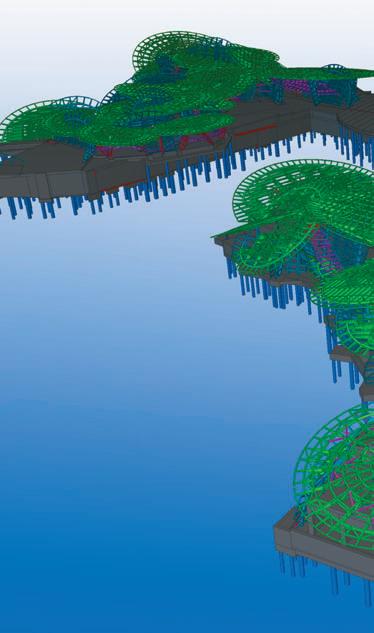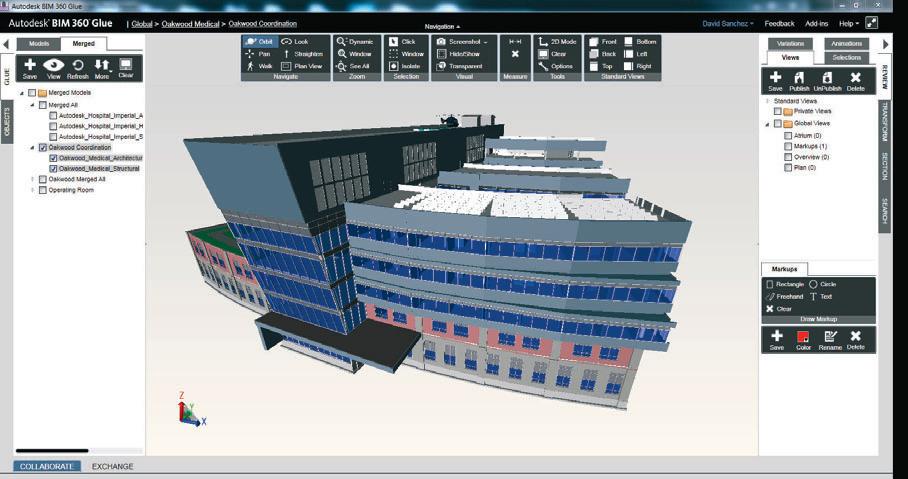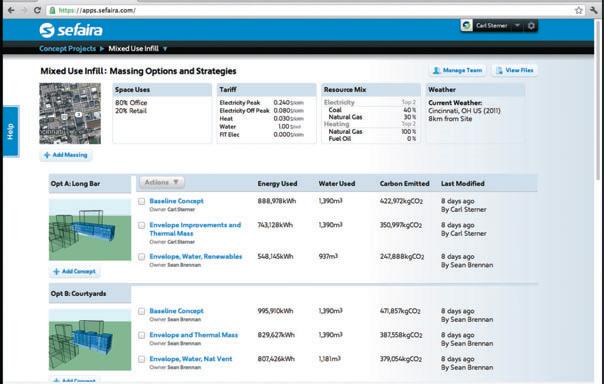BIM software: a catalyst for change Rob Charlton, CEO of space architecture, looks to the cloud and the process changes required for real time integration of the design team.
T
he UK construction industry is notoriously conservative and reluctant to invest. Only a small number of companies saw the early potential of Building Information Modelling (BIM) and decided to take a lead. Organisations like our own were fascinated by the potential and skilled our whole team in the new way of working. Construction companies such as Laing O’Rourke were also early adaptors and pushed the technology through its business. It took until mid 2011 for BIM to become mainstream in the UK. The announcement by the UK government in May 2011 that all government-funded projects would be delivered in BIM by 2016 legitimised the technology and approach. Paul Morrell from the government task force significantly raised awareness, but more importantly demonstrated that BIM was not going to go away. Right across the industry from designers to builders and clients there is a varying level of adoption. At consultant level all professions are aware of the technology and are adopting it at different paces. Large practices are making a commitment with smaller practices taking a more cautious approach.
18
November / December 2012
p18_19_AEC_NOVDEC12_Software.indd 18
Builders are now aware of BIM and their commitment ranges from a reactive response when required through to pro-active investment in research and development. We have moved into a period where clients are starting to appreciate the benefits of quality building information in the process of managing risk and importantly managing their assets and facilities in the long term.
This is largely a replication of how design management and development has progressed for many years only using models as opposed to 2-dimensional information. We are now moving towards Level 3 BIM, which will not only require that the industry adopts new technical skills in using software but also a change in how procurement and liability is Rob Charlton is CEO of managed. space architecture. He was instrumental in the Over a number of years launch of BIM. several of the software Technologies in 2011, a On the level developers have been develspecialist technology company supporting the oping cloud-based strategies The UK government has construction sector and and it is clear that software adopted a range of estabits supply chain. suites being hosted locally is lished levels to identify progâ– spacegroup.co.uk likely to be phased out with ress and growth in the matuâ– bimtechnologies.co.uk software solutions and storrity of BIM. The target for age being held in the cloud. 2016 is that all projects will This will also provide the be delivered to level 2 BIM. Level 2 BIM is a relatively straightfor- ability to access a wide range of services ward development in that individual and to ensure that information and servicproject teams can still work within their es are current. It is likely that, rather than making oneown authoring software with the individual models being federated into a cen- off capital savings for software, organisatral file and co-ordinated independently. tions will be encouraged to use credits,
Rob Charlton space architecture
www.AECmag.com
9/11/12 09:11:12






